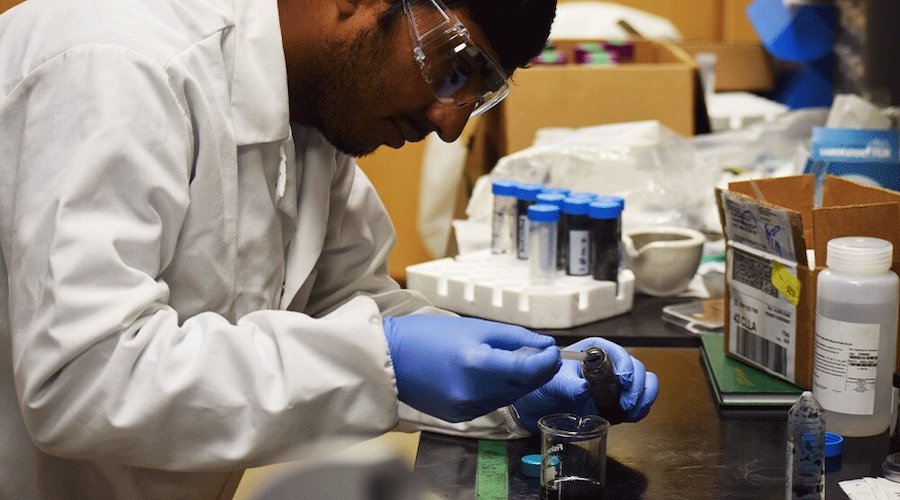To accomplish this task, the researchers turned to electrochemistry. They placed coke into an electrolyte solution with a working electrode and a counter electrode. When they applied voltage to the working electrode, the ionic species or negative ions from the electrolyte migrated in between the graphene sheets in a process called intercalation.
“Think of the coke as a book and the graphene as each individual sheet of paper,” Green said. “When the book is laid flat on its spine, the pages fan out and have more gaps between them. The process of electrochemical exfoliation is similar.”
According to the researcher, when the coke is expanded, the graphene separates. Negative ions are created and move into the spaces between the graphene sheets, completing the coke byproduct and graphene separation.
In a paper published in the journal 2D Materials and Applications, the researcher and his team explain that many graphene applications require high conductivity, but whether the graphene from petroleum coke could achieve such performance was unknown.
The graphene created from the coke had a conductivity of 50 siemens per meter compared to a typical lithium-ion battery, whose electrical conductivity is about 150-160 siemens per meter. With a heat treatment called annealing, the researchers were able to boost the conductivity even higher, making it comparable to electrodes in lithium-ion batteries.
In the scientists’ view, these findings may help bring to fruition graphene applications that have been in development for years.
“The future of nanomaterial scaleup is directly tied to existing streams in the petrochemical industry, and I anticipate many more cases where petroleum-derived chemicals are converted to high-value carbon materials like graphene,” Green said.




